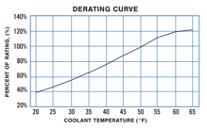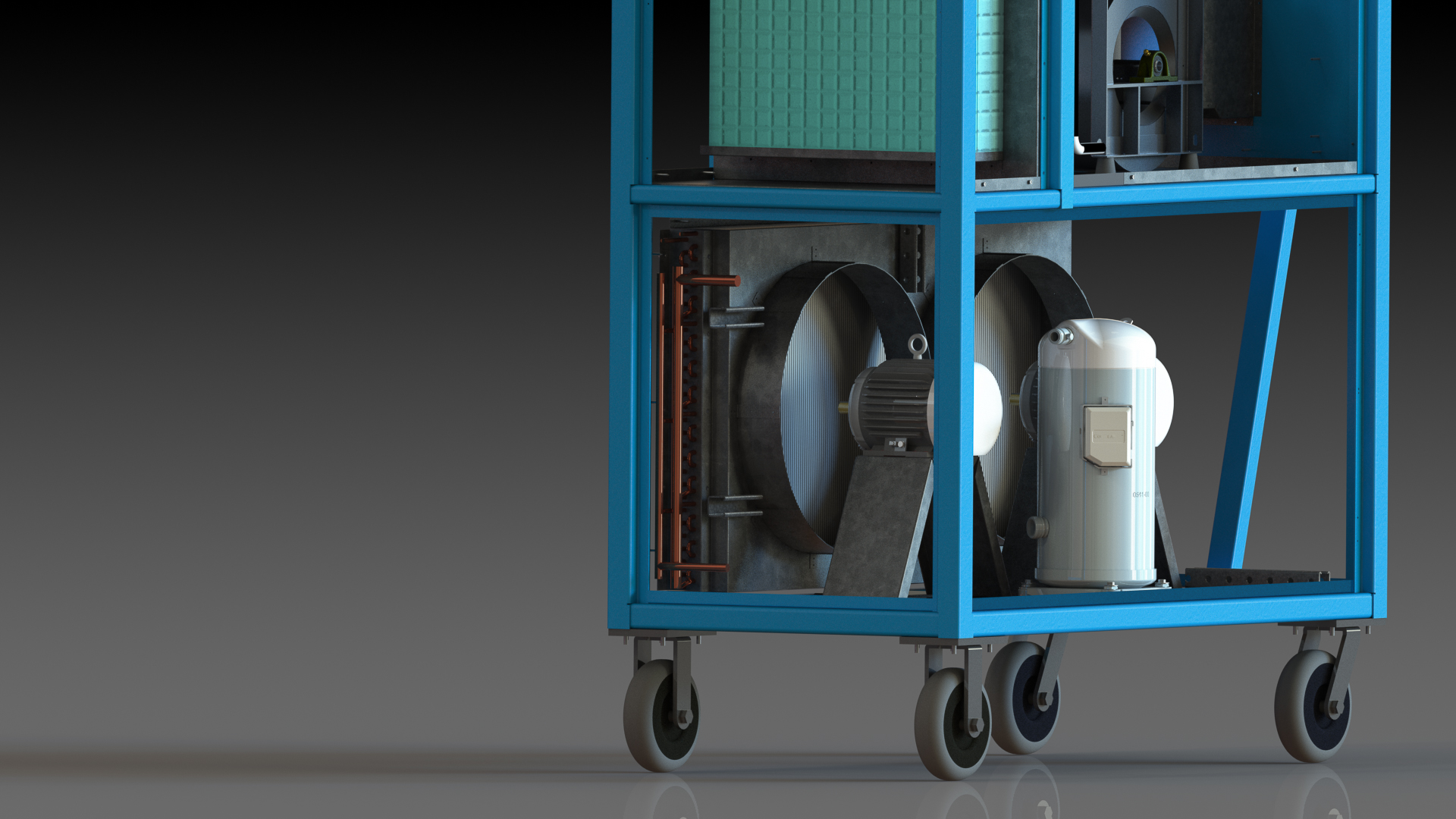When a customer calls GCI Refrigeration requesting a quote, our experts often ask for the chiller capacity. Sometimes, a customer has no idea what this means or how to calculate chiller capacity. That’s alright, because we are here to break it down for you.
The Basics of How to Calculate Chiller Capacity
Let’s begin with the basics before learning how to calculate chiller capacity. Refrigeration is the transfer of heat from one place to another. But, how do we measure this? In terms of capacity, this is measured in tons of cooling or BTU/H or KW. But what is this exactly? Tonnage can vary exponentially based on coolant temperature and percent of rating, as seen in this graph.

This derating curve shows how capacity can rise and fall due to the required cooling temperature of this process.
Nominal tons are typically calculated at normal conditions (95°F Ambient), which is 40°F leaving water temperature and 50°F entering, yielding at net 10°F ΔT. If you were to lower the temperature, the same unit would lose a certain amount of capacity and vice versa. Ten tons at -20°F is a lot larger of a system than ten tons at 50°F.
If you were using a 60% glycol solution, this would change the heat transfer properties of the unit, and the conditions must also be compensated for. This is what derating is contingent on.
Now you know how to calculate chiller capacity, but if you are still unsure how to calculate properly, contact GCI Refrigeration. Tell us your conditions to get a custom-tailored quote for you!
What You Need to Know to Calculate Chiller Capacity
So, how do we calculate chiller capacity? To perform this calculation, you need to know:
- The volume flow rate of water into the evaporator.
- The inlet and outlet chilled water temperature.
- We then need to look up the properties of water for the following.
- The density of the water at the average temperature (inlet temp + outlet temp)/2.
- The specific heat capacity of the chilled water at the average temperature (inlet temp + outlet temp)/2.
The equation for calculating heat load is:
Q = ṁ x C x ΔT
Q = Heat Load (BTU/hr)
ṁ = Mass flow rate of fluid being cooled
C = Specific heat of fluid (BTU/lb-°F)
ΔT = Change in fluid temperature
If you are using GPM (Gallons Per Minute), there are 8.34 lbs. in each gallon of water and 60 minutes to an hour. This factor becomes 499.8. So, our equation looks like this:
Q = GPM x C x ΔT x 499.8
Q = Heat Load (BTU/hr)
GPM = Water flow in gallons per minute
C = Specific heat of fluid (BTU/lb-°F)
ΔT = Change in fluid temperature
499.8 = Constant converting lbs to GPM
Further clarifying this to incorporate fluids other than water, the equation changes even more:
Q = GPM x SG x C x ΔT x 499.8
Q = Heat Load (BTU/hr)
GPM = Fluid flow in gallons per minute
SG = Fluid Specific Gravity
C = Specific heat of fluid (BTU/lb-°F)
ΔT = Change in fluid temperature
499.8 = Constant converting lbs to GPM
Calculate your chiller capacity here.
Contact GCI Refrigeration to Help Calculate Chiller Capacity
While you now know how to calculate chiller capacity, receive help from the experts when you contact GCI Refrigeration today. It never hurts to get a second opinion. Contact us today at 225-925-6950 or fill out our request form to start calculating chiller capacity.


